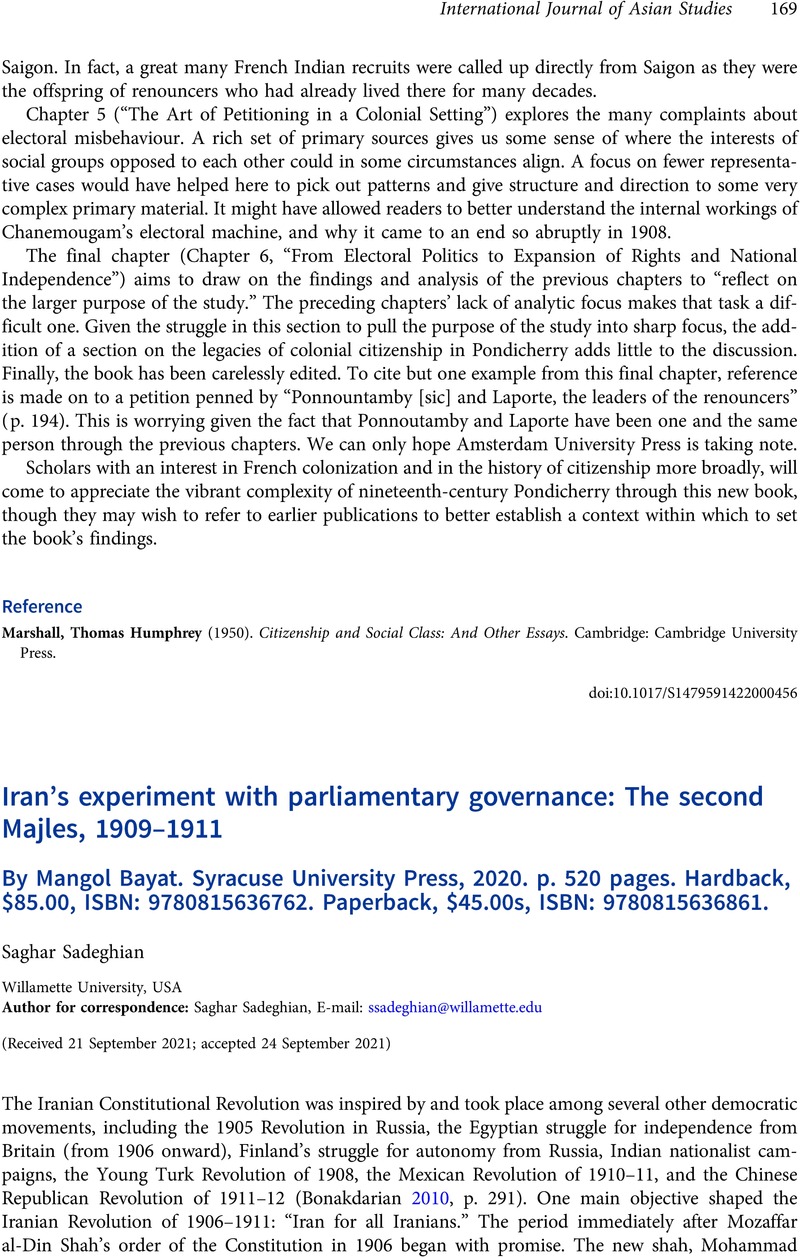No CrossRef data available.
Article contents
Iran's experiment with parliamentary governance: The second Majles, 1909–1911 By Mangol Bayat. Syracuse University Press, 2020. p. 520 pages. Hardback, $85.00, ISBN: 9780815636762. Paperback, $45.00s, ISBN: 9780815636861.
Review products
Iran's experiment with parliamentary governance: The second Majles, 1909–1911 By Mangol Bayat. Syracuse University Press, 2020. p. 520 pages. Hardback, $85.00, ISBN: 9780815636762. Paperback, $45.00s, ISBN: 9780815636861.
Published online by Cambridge University Press: 19 October 2021
Abstract
An abstract is not available for this content so a preview has been provided. Please use the Get access link above for information on how to access this content.

- Type
- Book Review
- Information
- Copyright
- Copyright © The Author(s), 2021. Published by Cambridge University Press
References
Afshar, Iraj and Eir (2016). “Taqizadeh, Sayyed Hasan i. To the end of the Constitutional Revolution.” Encyclopaedia Iranica, online edition. Accessed September 19 2021. https://iranicaonline.org/articles/taqizadeh-sayyed-hasan-01.Google Scholar
Bayat, Mangol (1991). Iran's First Revolution: Shi'ism and the Constitutional Revolution Of 1905–1909. Oxford: Oxford University Press.Google Scholar
Bayat, Mangol (2021). “Iran's Experiment with Parliamentary Government with Mangol Bayat.” Stanford Iranian Studies Program Youtube video, March 25, 2021. Accessed September 19 2021. https://www.youtube.com/watch?v=rwkRm-rsJPM.Google Scholar
Bonakdarian, Mansour (2010). “Erin and Iran Resurgent: Irish Nationalists and the Iranian Constitutional Revolution.” In Iran's Constitutional Revolution: Popular Politics, Cultural Transformations and Transnational Connections, eds. Chehabi, H.E. and Martin, Vanessa, pp. 291–318. London, New York: I.B. Tauris.Google Scholar



